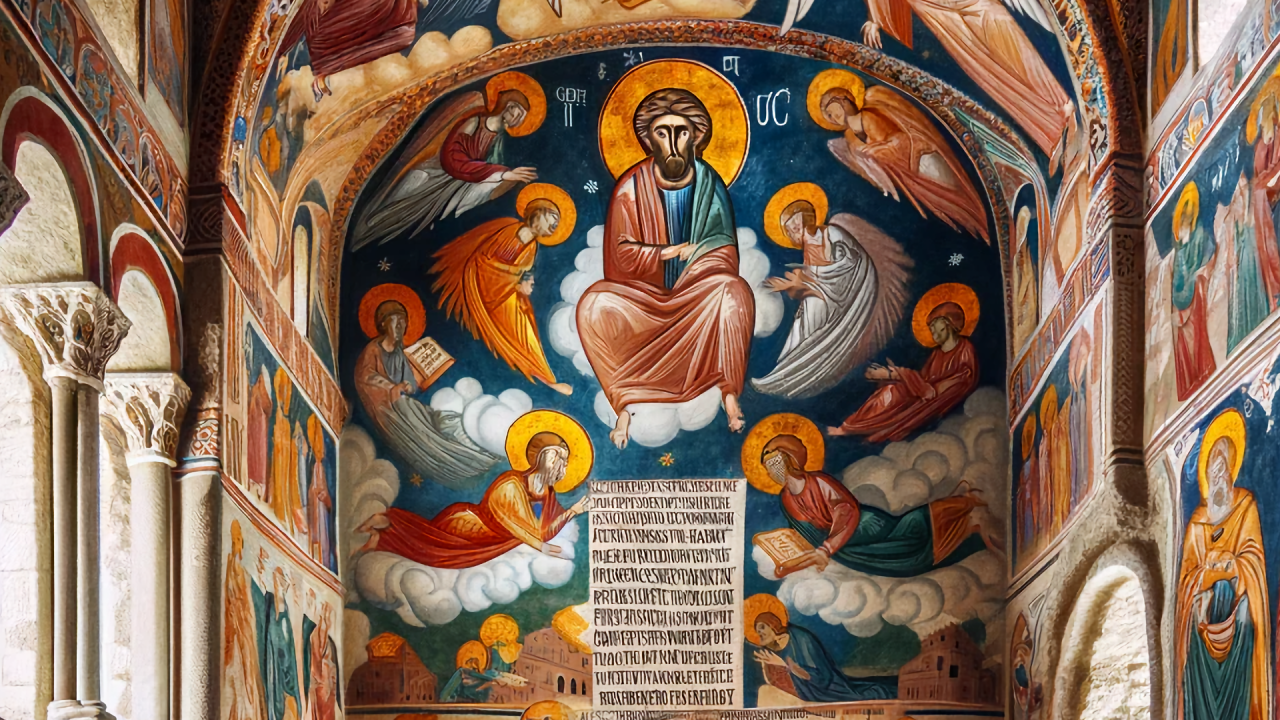
The Enigmatic Allure of Romanesque Painting
The Romanesque era, flourishing between the 10th and 12th centuries, marked a significant epoch in the history of European art. Romanesque painting, often overshadowed by the architectural grandeur of the time, offers a fascinating glimpse into the medieval mindset, merging religious symbolism with an emerging artistic expression. [Read: Methods To Becoming An Oil Painting Artist]
The Essence of Romanesque Artistry Romanesque painting is characterized by its bold colors, religious themes, and a distinctive stylized approach to figures and space. This style emerged from the need to educate and inspire a largely illiterate populace. As such, paintings were not merely decorations; they were visual sermons, illustrating biblical narratives and saintly lives with vivid imagery. [Read: Utilize Art Work Oil Painting To Decorate Your Living Area]
Techniques and Mediums The era saw the proliferation of frescoes, a technique where water-based pigments are applied on freshly laid plaster, allowing the painting to become an integral part of the wall. This method was ideal for decorating the vast interior walls of Romanesque churches. Additionally, illuminated manuscripts were a significant medium, where meticulous attention to detail and rich colors brought the text to life. [Read: Watercolor Painting Tricks – Sprinkling sodium]
Iconography and Symbolism Romanesque painters often employed a symbolic language to convey their messages. Colors, gestures, and even the size of figures carried profound meanings. Larger figures, for example, were used to denote importance, not physical size. The frequent use of gold and blue symbolized divinity and the heavens, respectively. This use of symbolism was instrumental in conveying complex theological concepts to a lay audience. [Read: Western Art – Known Western Artists & Paintings]
Narrative and Representation Unlike the later Renaissance art, Romanesque paintings did not strive for naturalism. Figures were often elongated, with exaggerated features and a lack of perspective, creating a sense of otherworldliness appropriate for religious subjects. Scenes from the Bible and the lives of saints were common, often depicted in a sequential narrative format, resembling a storybook. [Read: Better Understanding Arts and Crafts]
Regional Variations Romanesque painting varied significantly across Europe. In Italy, there was a strong Byzantine influence, evident in the use of gold and the depiction of elongated figures. In contrast, Spanish Romanesque painting displayed more vibrant colors and expressive figures, reflecting diverse cultural influences.
Legacy and Influence The Romanesque style laid the groundwork for the Gothic and eventually the Renaissance. Its focus on narrative and symbolism carried forward, influencing the way stories and teachings were depicted in art for centuries.
Conclusion Romanesque painting, with its distinctive style and profound symbolism, offers a window into the medieval world. It reflects a time when art was not just about aesthetics but was a powerful tool for communication and spiritual engagement. Today, these paintings remain not only as relics of the past but as testaments to the enduring power of visual storytelling.
Ilustradora
1moIt honestly breaks my heart as an artist but also as a fan of art and its history to see interesting articles like this one accompanied by images generated with AI. Really, is it intentional? Write an article narrating the incredible and enigmatic characteristics of an artistic style as fascinating and interesting as Romanesque art, and immediately proceed to place next to this narration an image that does not represent anything narrated because it was not made by human hands. It is even ridiculous how little the authors of these articles are aware of this type of inconsistency. How am I going to believe anything that is said in the article about Romanesque art if the image that accompanies it is a forgery? Aren't there hundreds of images of real Romanesque paintings and murals at our disposal? Please have a little more common sense.
Chef owner making food with the principles of Blue Zone lifestyle. (daily purpose, human connection, exercise, and what we eat) Weeknight customized service or Private Catering Events
4moThank you for reminding me to circulate my book collection so I can flip through my art books again